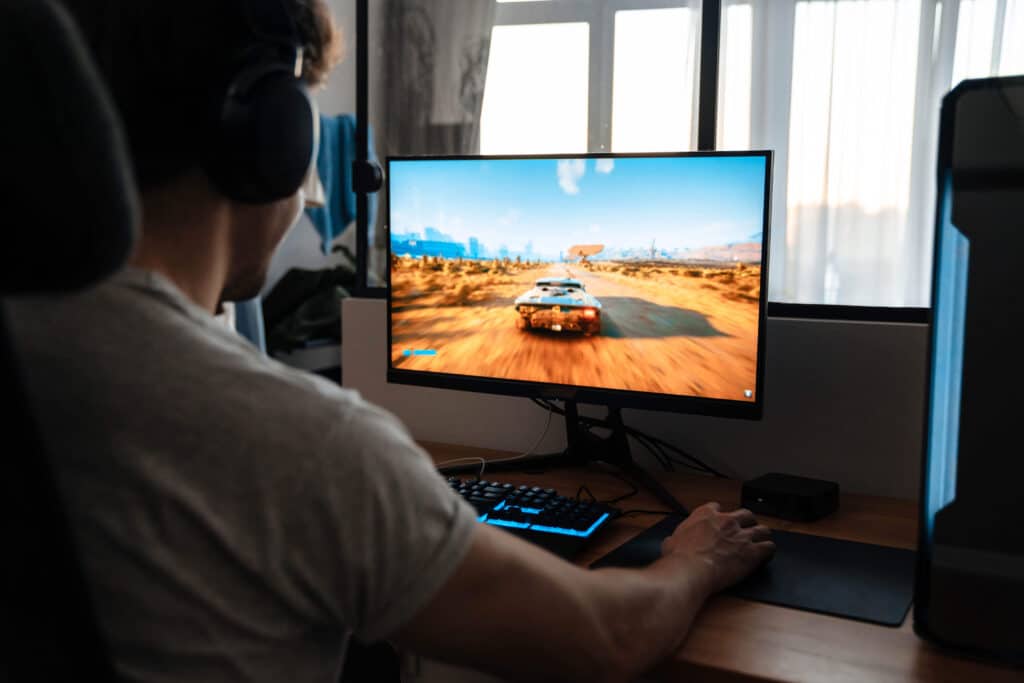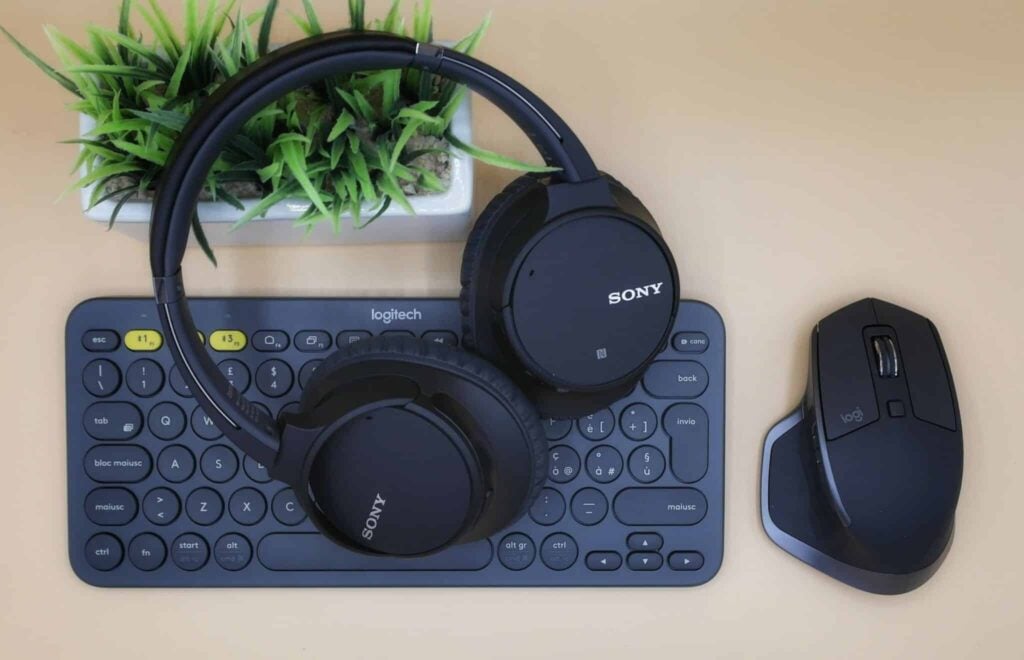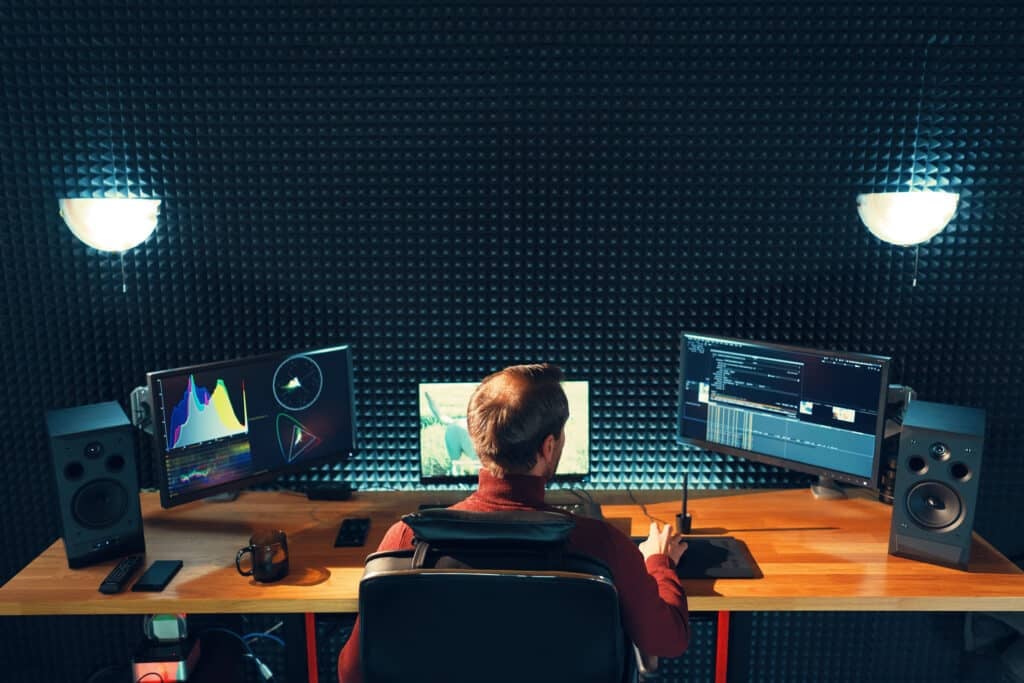If you’re in the market for a new monitor, one of the most important factors to consider when shopping is the refresh rate. You may have heard this term thrown around before, but what exactly is a refresh rate and why should it matter when selecting your next monitor?
In this blog post, we’ll give you an overview of what refresh rate of monitors is and explain why it’s essential that you pay attention to this factor while choosing your next monitor. We’ll also provide some helpful guidance on how to shop for monitors with the right refresh rate as well as other factors that should be taken into consideration.
What is a “refresh rate”?
Refresh rate is the number of times a monitor is capable of refreshing its image in a single second. It’s measured in Hertz (Hz) and dictates how many frames per second (fps) can be displayed on your monitor. A higher refresh rate means that more images are being updated per second, resulting in smoother motion and reduced lag. A lower refresh rate, on the other hand, will result in a higher input lag, or the delay between when you input an action and when it appears on your screen.

“Refresh rate comparison” by Sayeen is licensed under CC BY-SA 4.0
To put it into perspective, movies typically run at 24 frames per second, while 60Hz monitors refresh the image twice as fast (120 frames per second). So, you might not need a refresh rate higher than 60Hz unless you’re a serious gamer or need to work with extremely high-resolution media.
The most common refresh rates are 60 Hz and 144 Hz, but some gaming monitors can go up to 240 Hz. The higher the refresh rate of your monitor, the more responsive it is likely to be.
Why refresh rate matters for monitors
No matter what you’re using your monitor for – whether playing video games, watching movies, or just browsing the web – refresh rate matters. A high refresh rate results in smoother visuals without any lag or stuttering, allowing you to enjoy your content with minimal fuss. It can also reduce eyestrain and headaches that come from having to stare at a monitor for long periods of time.
If you’re shopping for an ultra-wide monitor specifically, then you should pay extra attention to the refresh rate since these monitors tend to have slower refresh rates than their standard counterparts. The best way to ensure optimal performance with an ultra-wide is by selecting one with a higher refresh rate (144 Hz or above).
Refresh rate is especially important if you’re a gamer, as lower refresh rates can cause major issues such as screen tearing. Screen tearing occurs when the monitor’s refresh rate fails to keep up with the frames being rendered by the graphics card. This results in a “tearing” effect on the image on-screen and can be incredibly distracting, ruining your gaming experience.
Which refresh rate is best for a monitor?
When it comes to selecting a monitor with the right refresh rate, it really depends on what you plan to use your monitor for. If you’re a casual user who mostly does work tasks like emailing, web surfing, and word processing then 60 Hz should be more than adequate.
If you want to get into gaming or do some video editing then 144 Hz or even 240 Hz will provide a much smoother experience. It’s also important to note that higher refresh rates require greater computing power from your other hardware components in order for them to keep up, so make sure those are up to snuff as well!
High refresh rate monitors can range from expensive to very expensive. If you’re not planning on doing any intensive gaming then you can save a lot of money by opting for a monitor with a lower refresh rate.
How refresh rate can impact your overall viewing experience
Resolution is the primary factor that determines the clarity of an image. However, a monitor’s refresh rate can be just as important when it comes to getting the most out of your viewing experience. A monitor’s refresh rate won’t necessarily improve the resolution of an image, but it can make a huge difference when it comes to how smooth and responsive your monitor feels.

When you’re playing a video game or watching a movie, for example, the higher refresh rate will reduce any motion blur and ensure that your graphics remain sharp. This also applies to fast-paced games as the monitor will be able to keep up with all of the action on-screen without any lag or distortion. A high refresh rate monitor also ensures that you won’t miss any details, even during the most intense gaming moments.
Refresh rate of monitors vs frame rate
It’s important to note that refresh rate and frame rate are not the same thing. The two terms are sometimes used interchangeably, but they refer to two completely different aspects of your overall setup.
Refresh rate is the number of times a monitor refreshes its image in one second and is measured in Hertz (Hz). Frame rate, on the other hand, is the number of frames a graphics card can render per second and is usually expressed as frames-per-second (FPS).
Think of it this way: the frame rate is the number of images being sent to the monitor, and the refresh rate is how many times per second the monitor can “refresh” those images. So, even if you have a high frame rate, it won’t matter if your monitor has a low refresh rate.
In fact, monitors with refresh rates lower than their graphics cards’ frame rates can cause major issues like screen tearing, which we touched on previously. This can lead to a poor overall viewing experience, so make sure that the refresh rate of your monitor is at least as high as the frame rate of your graphics card (e.g., if your graphics card can output 120 FPS then you should be looking for a monitor with a 120 Hz refresh rate).
These two technical aspects of your setup go hand-in-hand, so make sure to take both into consideration when selecting a monitor.
Conclusion
When shopping for monitors, the refresh rate of a monitor is an essential factor to consider. While 60 Hz should be enough for most casual users, gamers and video editors should look for monitors with 144 Hz or even 240 Hz for the best experience possible. In addition to refresh rate, you’ll also want to take into consideration factors such as resolution and aspect ratio, size, response time, and price when selecting your next monitor. With this knowledge in hand, you’re now ready to go forth and pick out your perfect monitor!
Frequently Asked Questions
Is it worth getting a monitor with a higher refresh rate?
Yes, if you plan to do any intense tasks such as gaming or video editing then having a higher refresh rate will result in smoother visuals and less screen tearing.
How can I make sure my hardware can keep up with my monitor’s refresh rate?
You’ll want to make sure all your other components are just as powerful as your monitor – consider investing in a high-end graphics card and processor, as well as fast RAM. Additionally, you’ll want to configure the graphics settings in your game or video editing software for the best performance possible.
Is 240 Hz better than 144 Hz?
It depends on what you plan to use your monitor for; most people should be fine with a 144 Hz refresh rate while more hardcore gamers may benefit from an even higher refresh rate like 240 Hz. However, keep in mind that higher refresh rates require greater computing power so make sure all of your other hardware components can handle it. Again, if you’re an experienced gamer, you’ll likely see the difference between a 240 Hz refresh rate and a 144 Hz refresh rate, but for casual users, the difference is less noticeable.
What is a graphics card?
A graphics card is a piece of computer hardware that’s responsible for generating images on your monitor. Many graphics cards come with their own dedicated memory and can be used to play games or edit videos. Investing in a good graphics card is important if you want to take advantage of higher refresh rates.



